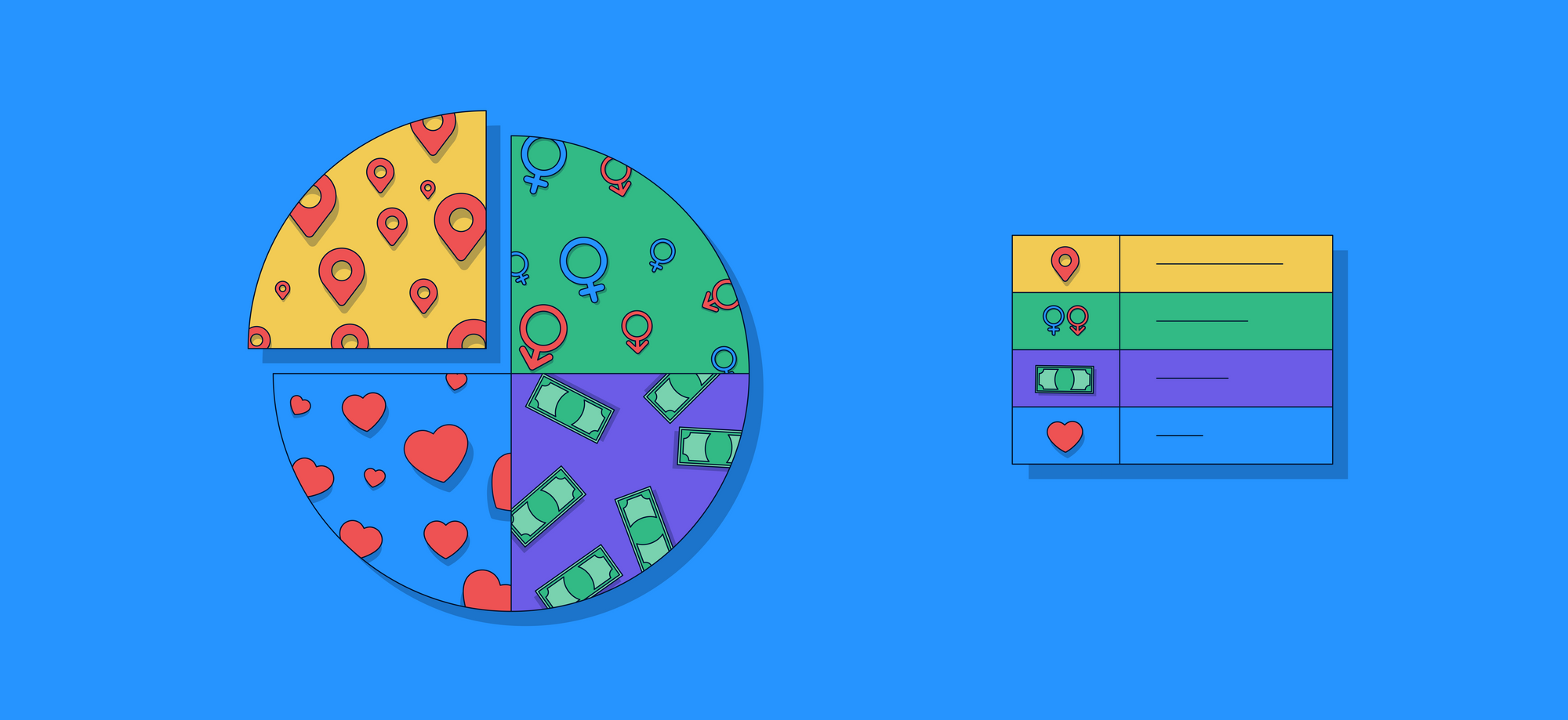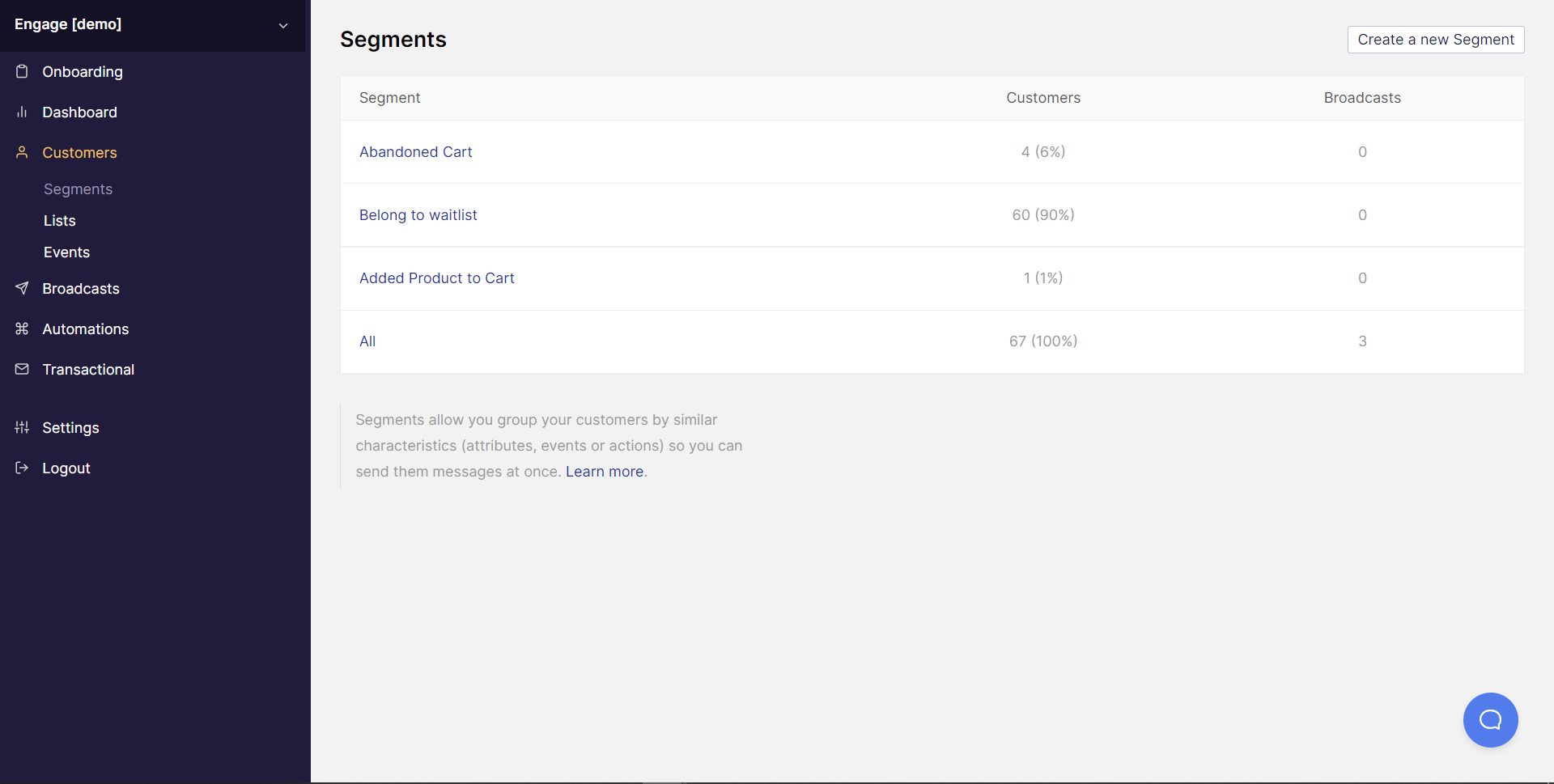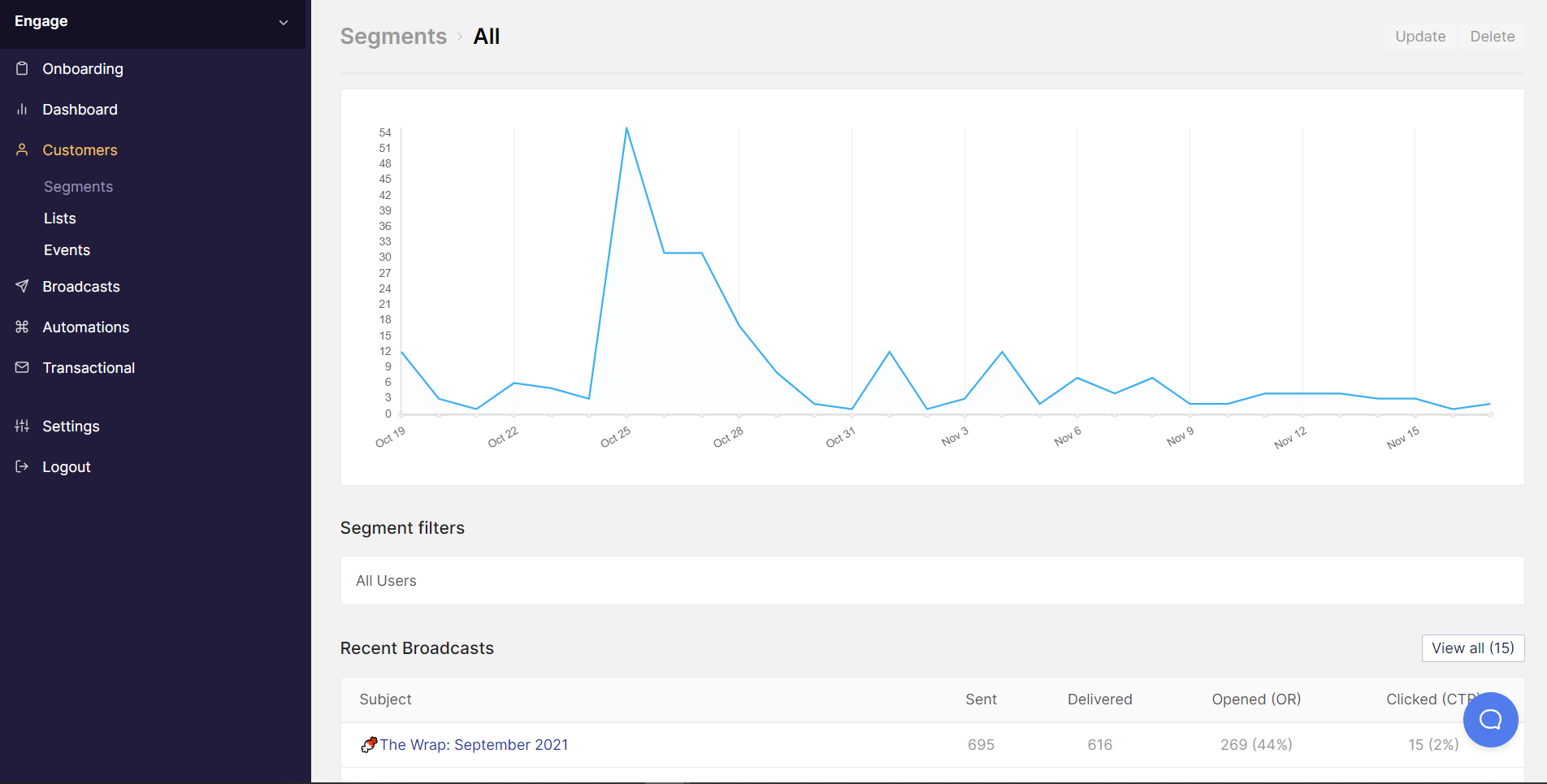Customer Segmentation Explained: How it Works and Why It is Important
In this article, you will learn what customer segmentation is, why it is important for your business and how to develop an effective customer segmentation strategy.

The way you engage with your customers makes a big difference in your entire marketing efforts. Your customers are individuals with unique traits, buying patterns, habits, challenges and goals, which means that you can't communicate with them the same way.
The key to building a great relationship with your customers is understanding their unique needs, preferences and communication channels. When you do so, you'll be able to meet your customers' expectations and win their hearts.
The best way to get started is through customer segmentation. In this article, you'll learn what customer segmentation is, why it is important for your business and how to develop an effective customer segmentation strategy.
Let's dive in!
Table of Content
- What is Customer Segmentation?
- Why Should You Segment Your Customers?
- Customer Segmentation Models
- Customer Segmentation Strategy
- Benefits of Customer Segmentation
- Getting Started on Customer Segmentation
What is Customer Segmentation?
Customer segmentation is the process of separating your customers into groups based on common traits and factors. This separation is based on customers having similar:
- Traits, such as personality, buying behavior and preferences.
- Factors include demographics, job title, income, number of employees and industry.
The ultimate goal of customer segmentation is to organize and manage your business relationship with customers and decide how to tailor your messaging to each customer segment, which helps improve customer loyalty, retention and conversions.
Why Should You Segment Your Customers?
The way you communicate with your customers can make a big difference. A generalized messaging would not be as effective as a personalized one. You will most likely respond to a message that addresses your last purchase activity than a message that tells you to buy a product you don't need.
Segmentation provides marketers and business owners with the opportunity to communicate with each customer in the most effective way. With a large volume of customer data, you can:
- Learn about your customers on a deeper level,
- Learn who your best customers are,
- Identify new opportunities to improve your product or service,
- Improve your customer service support by understanding the unique challenges that particular customers deal with and addressing the issues,
- Identify separate groups of customers based on demographic, behavioral and other factors.
- Build a great relationship with your customers and raise brand awareness.
In B2B marketing, most companies are interested in job titles, industry, company size, buying behavior and technology tool stack. B2C marketing, on the other hand, has to do with customer profiles, attributes and geographic location. B2C companies also segment customers based on lifestyles.
Most marketing goals are usually to derive the most value from customers. To achieve this, you'd need to know in advance how each marketing effort translates to defined customer action. Customer segments are usually created for long-term customer value impact, so segmenting your customers according to their actions is necessary.
Customer Segmentation Models
Below are some of the various customer segmentation models:
- Demographic oriented segmentation
- Psychographic oriented segmentation
- Customer segmentation
- Purchase pattern-oriented segmentation
1. Demographic oriented segmentation
This model primarily involves your customers' demographics. You can begin by running a demographic survey to identify common demographic traits about your customers. You can find out about your customer's marital status, income, or location. You can segment your customers based on their location, how much they earn and whether they are single or married.
2. Psychographic oriented segmentation
Your customer psychographic traits can help you build accurate customer profiles that align with specific lifestyles. To create an accurate psychographic oriented customer segmentation, you need to talk to your customers. Survey your customers, get on a call with them. What matters is that you obtain customer information in specific details.
3. Customer-oriented segmentation
This model usually involves the combination of customer behavioral and psychographic data. You can get Customer behavioral data from customer interactions with your product or purchase history. You can run deeper surveys among your customers to update your customer segments.
4. Purchase oriented segmentation
Wouldn't it be great to predict when and what your customer could purchase in the future? This model can help you to predict what your customers might purchase based on their purchase history. You can create customer segments with the category of active and inactive users.
Customers currently using your product or service should be grouped as "active", while those that don't engage with your brand should be grouped as "inactive". Also, this segmentation model can help you create segments for new customers that are yet to understand your product or service and those that are already familiar with your business.
With Engage, business owners can track how customers interact with their product(platform or app), and use that data to create unique customer segments.

Customer Segmentation Strategy
To create a winning customer segmentation strategy, you need to understand your business’ goals. Then you can work on creating a customer segmentation strategy.
Here's how you can get started:
1. Determine your customer segmentation goals
Before you begin any project, preparation is definitely important. Your segmentation strategy wouldn’t be effective without establishing the reason why you’re creating a customer segmentation strategy in the first place. You can figure out your reason by asking yourself what you hope to derive in the process.
Here is a more detailed breakdown of the factors to consider before building your strategy:
- Objectives: your core business goals that you intend to derive from the segmentation process.
- Stakeholders: you need input from senior staff from each department. From marketing to sales and customer support. These are the people that would be completely invested in the success of your segmentation strategy.
- Scope: this may involve the number of resources needed in the entire process, the percentage of customers accounts to be analyzed and the number of customer segments to be analyzed.
- Deliverables: what’s the desired output? While each stakeholder may expect an in-depth data analysis, the output must be established and plans should be set in place on how they will be utilized going forward. Typical outputs include a detailed and organized list of customer segments, a master list of customers in each segment.
Whatever your goals may be, you should note that customer segmentation is not a one-size-fits-all approach. What works for another organization may not work for your organization. So, you need to align your strategy with your business industry, specific needs and goals.
2. Developing a customer list
After you have determined your project objectives and scope. You need to develop an account list to use as your data set. You can build from your customer purchase history, call conversations, survey data, or customer relationship management.
However, note that some customer details may contain unique characters, traits, buying behavior or condition. So, you must carefully analyze the customer information before you incorporate them in your segmentation process.
3. Segment your customers into relevant groups
Once you figure out your segmentation goals, you can decide how you intend to segment your customers. Remember the customer segmentation models explained above? You can use each model to guide you through the process. What matters is that you group your customers based on your specific business, customers and segmentation goals.
4. Target and reach your customer segments
As soon as you identify your customer segments, you’ll need to figure out how you will reach them. Since various departments across your organization already understand how your customers are segmented, then targeting your customers would be more effective.
For example, if a particular segment includes a group of people in
- The marketing department team can create personalized content that addresses the needs, pain points and goals of this group of customers.
- Sales can identify the preferred channels of these customers and figure out the best ways to reach out and communicate with them.
5. Conduct customer segmentation analysis
Implementing a customer segmentation strategy without analyzing your efforts could lead to poor results. Because you won’t be able to identify what works and doesn’t work. So, you need to ensure that you analyze your segmentation efforts.
This way, you can tweak your strategy as needed. Additionally, you can get in touch with your sales and marketing team to know more about your customer’s behavioral and buying patterns. You can also conduct customer surveys to obtain more information about your customers.
Benefits of Customer Segmentation
Customer segmentation is a great marketing tool when implemented well. Here are some of the benefits customer segmentation can provide to your business.
1. Focusing your marketing message: Proper customer segmentation can help you tailor the right messaging to your customer at the right time. So, you can use customer data to create specific and relevant messaging to each customer segment with fewer chances of lower engagement rates. Instead, this results in increased customer interest in your product.
2. Increased high-quality revenue: Once you identify the right type of customers for your business, your sales team can find ways to increase revenue. So they can avoid the wrong customer segments, work with the right ones and find ways to increase revenue and promote a growing customer base. Your sales team trying to sell to the wrong customer segment can lead to more expensive selling or even lower upsell potential after a customer makes an initial purchase.
3. Improved product experience: When you understand the type of customer that needs your product, you'll find ways to showcase your product as the best solution for their needs. As a result, your customers would derive more value from your product and would continue using it. Plus, since your organization would have insights into your most valuable customers, it can offer more offerings to improve customer experience.
4. Enhanced competitiveness: The more customers enjoy your product and service, the more customers you'll retain, which ultimately leads to increased revenue generation, improving your competitiveness in the market. With well market segments, your customers will easily recognize your brand.
5. Establishes brand identity: By segmenting your customers, you can raise your brand awareness in your market. This way, your customers will easily identify your brand and engage more with your product. Most times, this leads to established brand value among your other competitors.
6. Improved marketing channel: Customer Segmentation can help you and your team identify the best platforms that your customers frequent the most. By knowing the particular customer segments, you can direct your message to the right marketing channel, which eliminates any chances of sending messages through the wrong channels.
You'll be able to reach customers at the best time.
7. Improved customer relationship: The right customer segments could lead to a better relationship with customers. Respond to your customer's queries, reply to your customer's survey report. Regular communication with your customers will keep you updated about the latest opportunities in the market.
8. More customer retention: Customer segmentation enables you to deliver more personalized and relevant messaging to your customers. This personalized approach will help you win the hearts of your customers. Studies have shown that about 75% of satisfied customers are most likely to remain with a business that regularly meets their needs.
9. Better use of resources: With customer segmentation, you can get the best use of your resources, which means achieving your business objectives at a reasonable cost. So, no need to deal with large company waste or spend more resources than necessary. All you need to do is focus on using a limited number of resources for your marketing efforts.
What to Look for in a Customer Segmentation Software
There are so many customer segmentation tools on the market today. However, it would be best to choose a segmentation software that fits your organization's needs and goals.
Here are a few factors to consider when choosing a customer segmentation tool.
1. Begin with a powerful CDP for capturing customer data
Your customer segmentation would be more effective when you have a master list of your customers' attributes and interactions or events. Various departments in your company would have customer data, from marketing to sales and customer success teams. But it will be of no good if all this information is not compiled together in a unified form for easy tracking and comprehension.
Customer support staff and sales reps could face the challenge of having a clear picture of the type of customer involved in the segmentation process, which would make it harder to create customer segments for each department. The best solution is to use a Customer Data Platform that tracks and stores all customer behavioral patterns, purchase history, conversations, details, etc. This approach creates better ways to segment customers.
Engage is a marketing automation platform that helps you track your customer data, create unique customer segments and send personalized messages to your customers. Learn More.
2. Integrate a customer segmentation tool
Even if you had all the customer data globally, if you don't leverage a powerful segmentation tool, your data won't do much good. Take full advantage of your CDP by integrating a customer segmentation tool with the following key qualities:
- Scalability: this is an important factor when choosing customer segmentation software. Businesses do grow, and your chosen segmentation tool needs to scale with it. Your chosen segmentation tool should track important metrics as soon as you start running your software. It should also be able to track distinctive segments as your company begins to scale.
- Customizability: when it comes to segmenting customer data, the ability to dig deeper on all levels is crucial. For example, if your customer retention rate lags, then you need to assess this metric. How often do customers use your product? Do customers get frustrated when talking to the customer support team? Ensure you choose a customer segmentation tool that enables you to analyze data based on your business needs.
- Visibility: when the numbers get too many, you can easily become overwhelmed, making it hard to visualize them. So, you must choose a segmentation tool that provides a clear way to visualize all the information all at once. You can choose a tool that provides dynamic charts that update as new customer data comes in.

Getting Started on Customer Segmentation
Customer segmentation allows you to create unique groups of your customers and communicate effectively with your customers. It also helps boost conversion rates and customer retention rates. However, the process isn't an easy one.
You must prepare and plan for each step of the segmentation process so you can deal with fewer challenges and get maximum results. If you plan your customer segmentation properly, it can positively impact your organization, from sales, marketing, customer service, and operations management. You'll also don't have to pour all your resources into every single customer.
Instead, you can double down on your best customer segments.
With the Engage, you can track how customers interact with your product or service, and create unique customer segments or groups. You can then use that data to send personalized messages to your customer via Email, SMS, Push Notifications and In-App messages.
